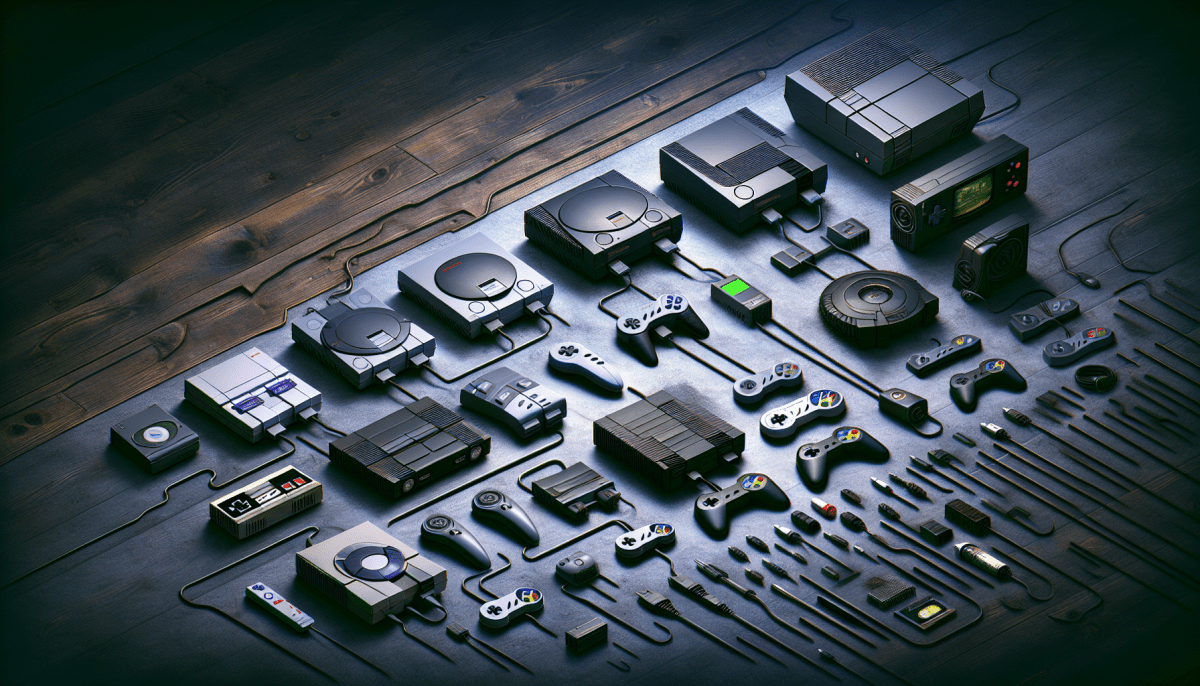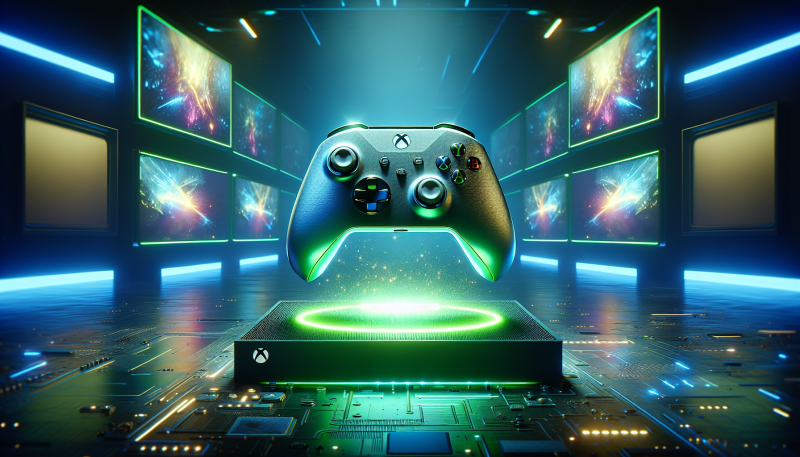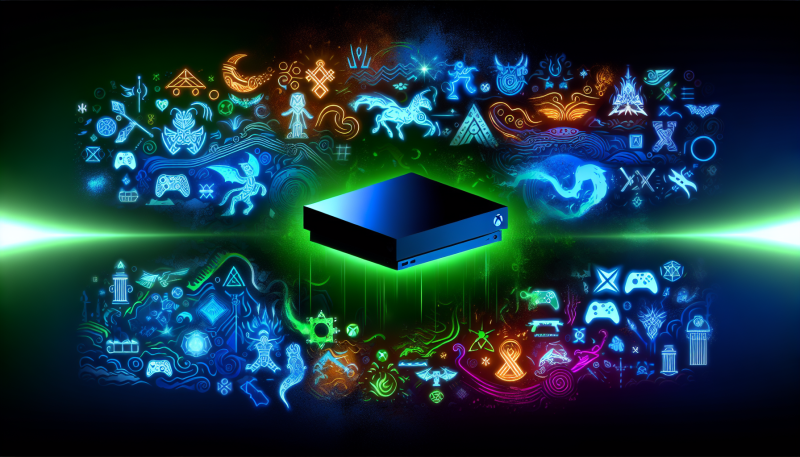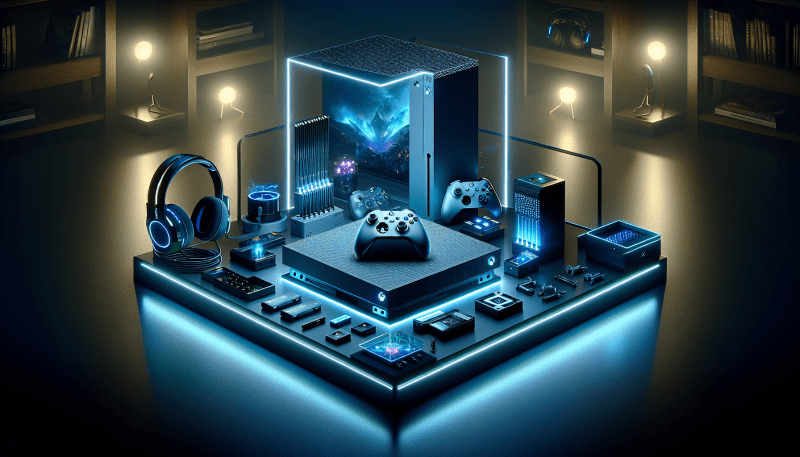From Dream to Reality: The Origin of Xbox
In the late 1990s, the video game industry was dominated by two giants—Sony's PlayStation and Nintendo's GameCube. However, one company had a vision to revolutionize the gaming world with its innovative ideas, and that company was Microsoft.
The story of Xbox began in 1998 when four engineers, Seamus Blackley, Otto Berkes, Kevin Bachus, and Ted Hase, proposed the idea of developing a game console to Microsoft's executive team. Microsoft had no prior experience in creating video game hardware, but these engineers believed that with their knowledge and skills, they could create something unique that would rival Sony and Nintendo's offerings.
The team worked tirelessly for more than two years to bring their vision to life. They developed and refined the console, created a controller that would become iconic, and designed a software platform that would allow game developers to easily create games for the console.
In 2001, Microsoft unveiled the Xbox at the Consumer Electronics Show (CES) in Las Vegas. The console was an instant hit and garnered massive attention from gamers and industry experts alike.
The Xbox was lauded for its innovative design, powerful hardware, and incredible graphics capabilities. It boasted an impressive set of features, including the ability to connect to the internet and play online, making it the first gaming console to offer online play as standard.
The launch of the Xbox was not without its challenges, however. The console faced stiff competition from Sony's PlayStation 2, which had already been on the market for a year. But Xbox's success was undeniable, and it quickly gained a foothold in the market.
Over time, Microsoft continued to innovate and improve the Xbox, launching new versions of the console that introduced new features and capabilities. The Xbox 360 and Xbox One followed, each offering its own unique set of features and capabilities, cementing the Xbox's place in the gaming world.
Looking back at the history of Xbox, it's hard to believe that just a few engineers' dreams could transform into a global phenomenon. However, the hard work, dedication, and belief in their vision made the Xbox a reality, and it continues to be a beloved gaming console for millions of people around the world.
The Rise and Fall of Xbox's Biggest Contenders
Aside from Sony's PlayStation, several other gaming consoles have tried to compete with Xbox in the gaming industry. Let's take a look at the rise and fall of Xbox's biggest contenders.
1. Sega DreamcastSega Dreamcast was one of the pioneering game consoles, long before Xbox was released in the market. It was launched in 1998 and was the first console to feature built-in modems, allowing gamers to play online with friends. Its initial success was evident with its launch in Japan, selling out completely within 24 hours. However, problems arose with the system's piracy prevention, lack of support, and insufficient third-party developers. Sega eventually discontinued the console in March 2001.
2. Nintendo GameCubeNintendo released GameCube in 2001, hoping to become a contender in the gaming console market. It was smaller, sleeker, and cheaper than its competitors, but its reliance on the use of proprietary disks instead of DVDs was its downfall. It also suffered from a lack of online support and limited third-party developers. After 6 years, Nintendo discontinued the GameCube, with a total of 22 million units sold.
3. Microsoft ZuneMicrosoft's Zune was supposed to be the iPod's direct competition in the portable media player market. It was launched in 2006, and although it was initially successful in terms of sales, it soon faced problems with its lack of software updates and third-party app support. By 2011, Microsoft officially discontinued the Zune device, leaving Apple's iPod as the undisputed leader in the portable media player industry.
4. OUYAOUYA was a Kickstarter project that was supposed to revolutionize the gaming industry by providing an open-source option for gamers. It was launched in 2013 and raised a staggering $8.5 million in crowdfunding. However, it suffered from severe hardware problems, limited game titles, and lack of support from third-party developers. By 2015, OUYA was acquired by software development company Razer, which cited the device's failure in the market.
Through the years, Xbox has faced several contenders in the gaming console market. From the pioneering Sega Dreamcast, the innovative GameCube, the portable media player Zune, to the open-source OUYA, Xbox has consistently survived its competitors' rise and fall in the industry. As Xbox continues to innovate and revolutionize gaming, its future as one of the industry's leaders seems solid.
Xbox's Evolution: A Look Back at Console and Game Development
Since its launch in November 2001, the Xbox console has evolved in terms of hardware and software. The first Xbox console came packed with a 733 MHz Intel Pentium III processor, 64 MB of RAM, and an HDD storage of 8GB. It was a state-of-the-art machine that changed the gaming industry with its advanced graphics hardware and online multiplayer capabilities.
At the heart of the Xbox's evolution were the software updates that kept enhancing the Xbox's gaming experience. The Xbox Live service launched in 2002, offering gamers an online platform to play and compete globally. Microsoft continuously added new features to Xbox Live, such as multiplayer tournaments, family settings, and downloadable content.
As for games, Halo: Combat Evolved, released alongside the Xbox, was a huge hit, and many credit it with the console's early success. Other popular games were released on the Xbox, such as Fable, Forza Motorsport, and the Elder Scrolls III: Morrowind.
In 2005, Microsoft released the Xbox 360, which improved upon the original Xbox in all aspects. The Xbox 360 featured a sleeker design, support for HD graphics, more storage, and a user-friendly interface. The Xbox 360 was an even bigger success than its predecessor, bringing gamers more features and a more immersive gaming experience.
One of the most significant aspects of the Xbox 360 was its online platform, Xbox Live. New online features, such as party chat, cross-platform gaming, and online friends and achievements lists, were added. Xbox Live became an integral part of multiplayer gaming on the Xbox 360, as it offered a rich and immersive online gaming experience.
Games continued to be an essential part of the Xbox's evolution. The Xbox 360 brought gamers exclusive franchises such as Gears of War, Halo 3, and Fable II, as well as third-party games such as Call of Duty, Mass Effect, and Bioshock.
In 2013, Microsoft released the Xbox One, which had even more advanced hardware, a new controller, and a broad range of features such as multitasking and streaming TV. The Xbox One also focused on integrating entertainment into the console, bringing television and media together with gaming.
The Xbox One offered gamers superior graphics and higher performance, due to its state-of-the-art architecture. It also had an extensive library of games, including exclusive franchises such as Forza Horizon, Halo 5: Guardians, and Gears of War 4, as well as third-party games like Grand Theft Auto, FIFA, and Call of Duty.
In conclusion, the evolution of the Xbox console has revolutionized the gaming industry by providing an immersive gaming experience that brought people from around the world together. The Xbox console has come a long way since its launch in 2001, but its dedication to innovation and bringing gamers closer to their favorite games is still the same.



